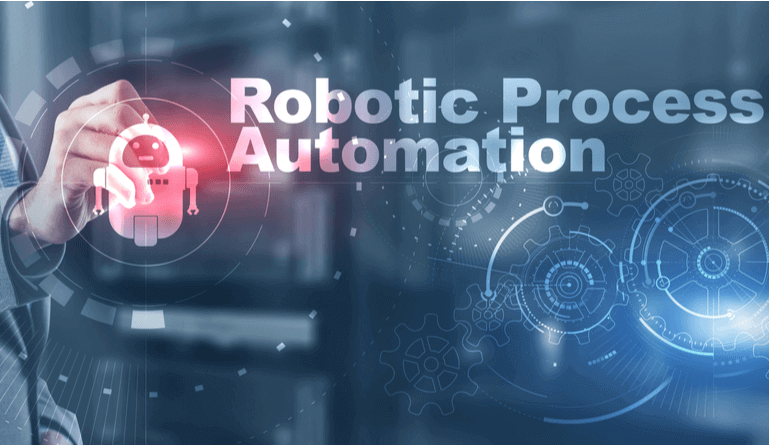Robotic Process Automation (RPA): Revolutionizing Workflows
Written by harrison

Advanced Strategies for Harnessing Robotic Process Automation (RPA)
In the transformative landscape of Robotic Process Automation (RPA), moving beyond the basics is imperative for unlocking the full potential of automated workflows. Let's explore nuanced strategies and insights that businesses can implement to harness the power of RPA, revolutionizing workflows, optimizing processes, and achieving unprecedented efficiency.
Cultivating a Comprehensive Understanding of RPA
Effectively leveraging RPA starts with cultivating a comprehensive understanding of its capabilities and applications. Businesses can invest in continuous education and training programs to ensure that employees grasp the nuances of RPA, enabling them to identify opportunities for automation across various business functions.
Customized RPA Implementation for Industry-Specific Workflows
RPA solutions should be tailored to suit the unique workflows of specific industries. Implementing customized RPA solutions ensures seamless integration with industry-specific processes, optimizing efficiency and minimizing disruptions. This approach allows businesses to harness the full potential of automation in contexts that are unique to their operational landscape.
Proactive Identification and Mitigation of RPA Risks
While RPA offers transformative benefits, businesses must proactively identify and mitigate potential risks associated with automation. This involves a comprehensive risk assessment, understanding the limitations of RPA, and implementing safeguards to prevent issues such as data breaches, errors, or system failures.
Orchestrating Complex Workflows with Advanced RPA Integration
To maximize the benefits of RPA, businesses can go beyond simple task automation and orchestrate complex workflows. Advanced RPA integration involves connecting multiple automated processes to create end-to-end workflows. This strategic approach enhances efficiency by streamlining entire business processes rather than isolated tasks.
Leveraging Cognitive Automation and Machine Learning
Cognitive automation, infused with machine learning capabilities, elevates RPA to new heights. Businesses can leverage machine learning algorithms to enable RPA systems to learn from data, make intelligent decisions, and adapt to dynamic scenarios. This combination of RPA and machine learning ensures continuous improvement and adaptability in automated processes.
Establishing a Center of Excellence (CoE) for RPA
To ensure sustained success with RPA, businesses can establish a Center of Excellence (CoE) dedicated to overseeing RPA initiatives. The CoE can provide governance, standardized best practices, and a centralized knowledge hub for RPA implementation. This centralized approach fosters consistency and efficiency across all RPA projects within the organization.
Continuous Monitoring and Optimization of RPA Processes
RPA processes should not be static; they require continuous monitoring and optimization. Businesses can implement real-time monitoring tools to track the performance of RPA bots, identify bottlenecks, and optimize workflows for maximum efficiency. Regular reviews and adjustments ensure that RPA continues to align with evolving business needs.
Strategic Scaling of RPA Implementation
As businesses grow, scaling RPA implementation strategically becomes essential. This involves assessing the scalability of existing RPA solutions, expanding automation to new business areas, and integrating RPA with other emerging technologies to create a holistic and scalable automation ecosystem.

Mastering RPA Excellence: Advanced Tactics for Future-Ready Automation
In the dynamic realm of Robotic Process Automation (RPA), mastering excellence requires the implementation of advanced tactics that propel businesses into a future-ready era of automation. Let's delve into sophisticated strategies and insights that businesses can adopt to elevate their RPA initiatives, ensuring sustained efficiency, adaptability, and innovation.
Advanced Analytics for Informed RPA Decision-Making
To achieve mastery in RPA, businesses should leverage advanced analytics for informed decision-making. Analytics tools can provide valuable insights into the performance of RPA processes, enabling data-driven decision-making for continuous improvement. By harnessing analytics, businesses can refine automation strategies, identify optimization opportunities, and make informed adjustments to enhance overall efficiency.
Human-Centric RPA Design and Collaboration
A crucial aspect of RPA excellence is adopting a human-centric approach to design and collaboration. Businesses can prioritize the user experience by designing RPA workflows that complement human tasks. Collaboration between RPA bots and human workers becomes seamless, optimizing the strengths of both entities. This approach fosters a harmonious integration of automation into the workforce, enhancing overall productivity.
Intelligent Document Processing (IDP) for Enhanced Accuracy
Intelligent Document Processing (IDP) is a game-changer in RPA, especially for businesses dealing with vast amounts of unstructured data. Implementing IDP enhances the accuracy of data extraction from documents, reducing errors and streamlining processes. Businesses can integrate advanced Optical Character Recognition (OCR) and Natural Language Processing (NLP) technologies to achieve unparalleled accuracy in document-based tasks.
RPA Governance and Compliance Management
As RPA initiatives expand, the importance of robust governance and compliance management cannot be overstated. Establishing comprehensive governance frameworks ensures that RPA implementations align with regulatory requirements and industry standards. This includes regular audits, adherence to data privacy regulations, and the integration of compliance checkpoints within automated workflows.
RPA in Cybersecurity: Ensuring Secure Automation
The integration of RPA in cybersecurity measures is pivotal for safeguarding automated processes. Businesses can implement secure coding practices for RPA bots, conduct thorough security assessments, and leverage encryption technologies. By prioritizing cybersecurity within RPA implementations, businesses can fortify their automated processes against potential threats and ensure data integrity.
Empowering RPA with Natural Language Processing (NLP)
Empowering RPA with Natural Language Processing (NLP) capabilities opens new possibilities for interaction and understanding. Businesses can leverage NLP to enable RPA bots to comprehend and respond to human language, facilitating more complex and dynamic automation scenarios. This human-like interaction enhances user engagement and expands the scope of tasks that can be automated effectively.
RPA and the Future of Work: Augmentation, Not Replacement
In the future of work, RPA will play a significant role in augmenting human capabilities rather than replacing them. Businesses can embrace this paradigm shift by strategically integrating RPA with workforce augmentation strategies. This involves identifying tasks where RPA can enhance human performance, leading to a symbiotic relationship between automated processes and human expertise.
Ethical Considerations in RPA: Responsible Automation Practices
As RPA becomes more pervasive, businesses must consider the ethical implications of automation. Implementing responsible and ethical automation practices involves addressing concerns related to job displacement, ensuring transparency in decision-making algorithms, and prioritizing fairness and equity in RPA implementations. Businesses can lead the way in responsible automation by fostering a culture of ethical AI and RPA usage.
Conclusion: Pioneering the Future with RPA Mastery
In conclusion, mastering RPA excellence involves a multifaceted approach that goes beyond basic automation. By harnessing advanced analytics, adopting human-centric design, embracing Intelligent Document Processing, prioritizing governance and cybersecurity, and considering ethical implications, businesses can pioneer the future of automation. RPA mastery ensures that businesses are not only efficient in the present but also well-prepared for the dynamic and transformative landscapes of the future.








